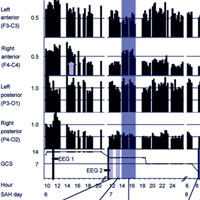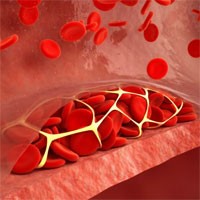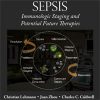Quantitative EEG for Detection of Brain Ischemia
ncbi.nlm.nih.gov
Electroencephalography (EEG) is a very promising tool for monitoring brain function in real-time in the ICU.
There are characteristic changes that occur on EEG in response to brain ischemia, correlating with CBF and brain metabolism.
Although raw EEG evaluations are time consuming, quantification of EEG features in real-time has been incorporated into many of the standard EEG software packages.
Some of these quantitative parameters have also been found to correspond to physiologic changes associated with ischemia.
Sensitive techniques are needed to detect cerebral ischemia, for example, in vasospasm-associated delayed cerebral ischemia after subarachnoid hemorrhage (SAH).
Early evidence suggests that qEEG may be sensitive enough to allow pre-clinical detection of delayed cerebral ischemia from vasospasm.
This approach may be utilized to widen the window of opportunity in order to prevent permanent neuronal damage in a variety of clinic scenarios.















